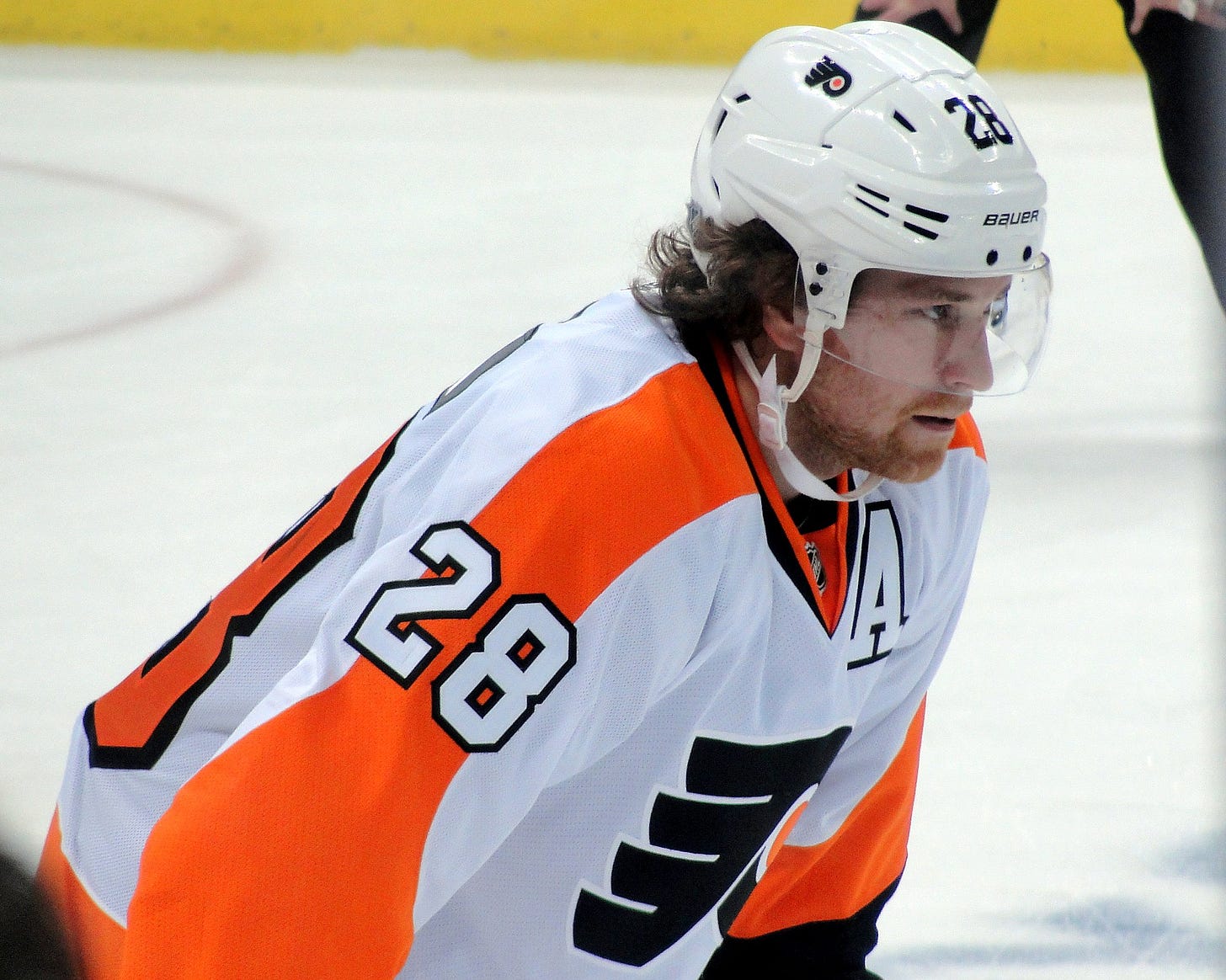I find it’s kind of weird that this is one of my more controversial opinions. Perhaps it’s due to the pedestal first-line centres are put on, or indeed the expectation that centres are expected to be (at least two of the three) big, well-skating, and defensively responsible.
My dictionary definition of a centre is a bit more simple and doesn’t carry the same expectations.
Center/Centre [sɛntə˞ ] - n. A forward who takes faceoffs.
That’s it. That’s all a centre is.

Wingers are social constructs. No, seriously. There is no mention of wingers in the NHL rulebook. There is, however, mention of centres as in 32.5 (v) “the linesperson shall stop play: when the puck has been batted with the hand by either center in an attempt to win the face-off in any zone”, for example.1 It also appears in the definition of high sticking (62.1) as an allowed accidental contact akin to the follow-through of a shot.2 Rule 76, which outlines faceoff procedure, is where we get the most frequent mentions of centres. In fact, 76.4 is titled “Procedure – Centers”3. In fact, here’s an excerpt of this rule: “If a center is not at the designated face-off area once the five (5) second time limit has elapsed, the Linesperson will drop the puck”.4 Tellingly, the rulebook’s next subrule 76.5 is titled “Procedure – Other Players”5. Indeed, the subsequent rules mention “center” as synonymous with the phrase “player taking the faceoff”. This is to allow for the rules to apply even after the center is thrown out. All other players are designated as “other players”.
Defense, for those of you wondering are mentioned as well in the rulebook, under — funnily enough— Rule 76.2: “following a stoppage of play, should one or both defensemen who are the point players or any player coming from the bench of the attacking team, enter into the attacking zone beyond the outer edge of the end zone face-off circle during an altercation, gathering or ‘scrum,’ the ensuing face-off shall take place in the neutral zone near the blue line of the defending team.”6
What does this mean?
What this means is that the only expectation we should place on a centre is that they’re good at taking faceoffs. Or at least decent. Not everyone is Anze Kopitar. Not everyone has to be Anze Kopitar. In a world where Man-on-man defences exist, there’s not reason to be so attached to expectations of size as in many cases. The position only exists for purposes of faceoffs.
So, if there’s no definition of a winger in the rulebook, is there a definition of a “forward”? No. But we still know forwards exist in opposition of defensemen. If there are five skaters7 and two of the are defensemen, then the rest must be forwards. By the same logic, we know that wingers exist in opposition of centres, making wingers “forwards who do not take faceoffs” or rather “are not taking the faceoff”.
NHL Rulebook 2023-24, pg 54-55.
NHL Rulebook 2023-24, pg 91.
NHL Rulebook 2023-24, pg 115.
ibid.
NHL Rulebook 2023-24, pg 116.
NHL Rulebook 2023-24, pg 114.
Skaters exist in opposition to goaltenders



